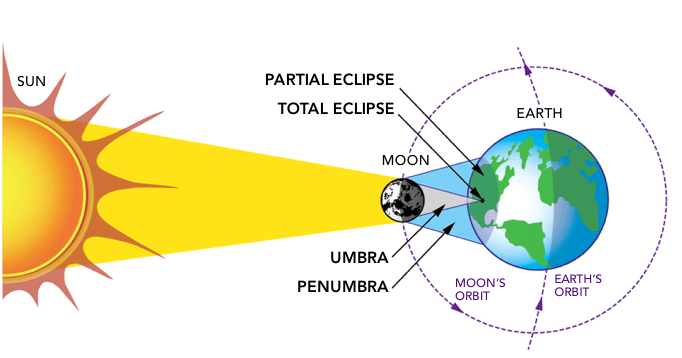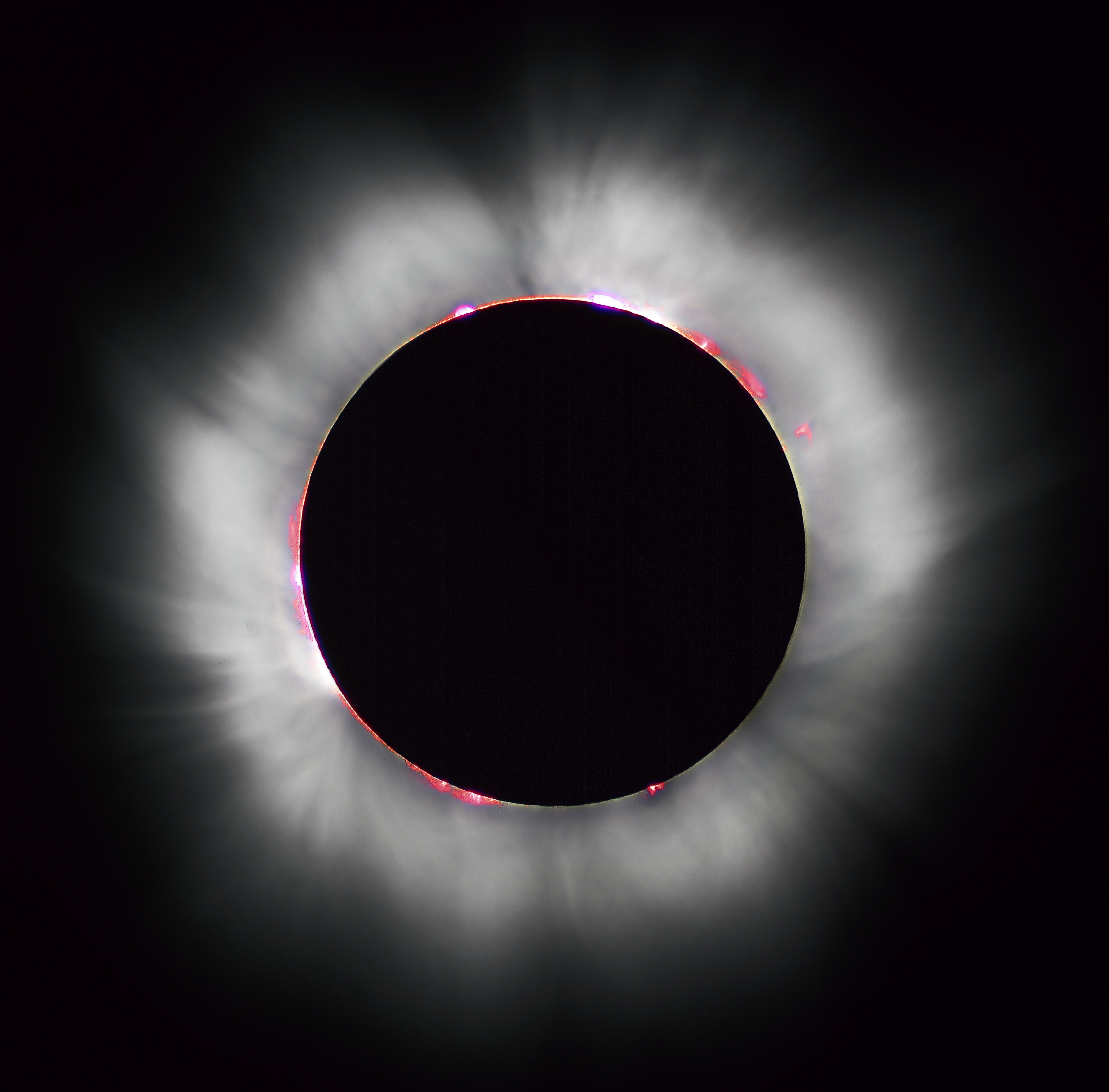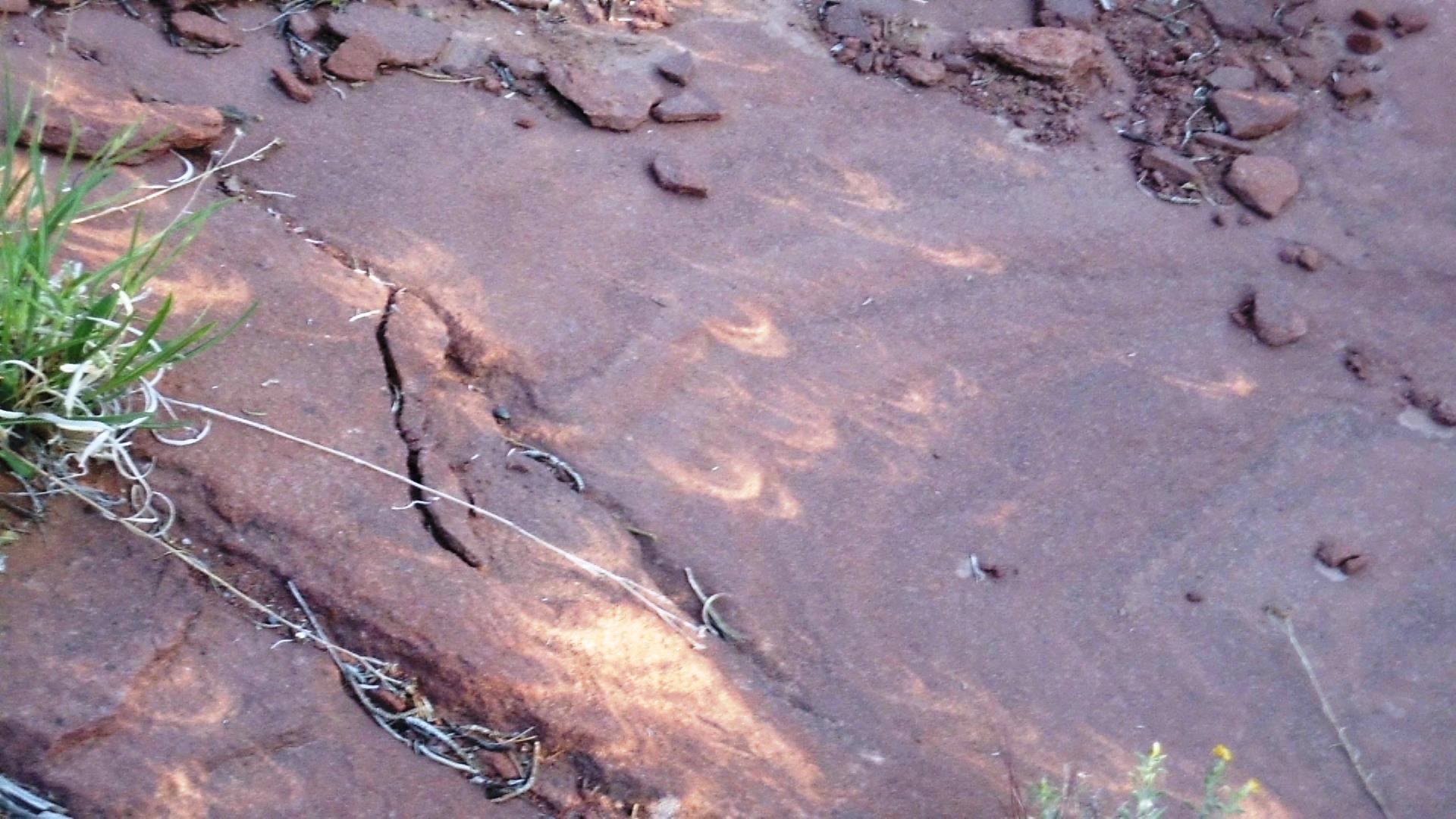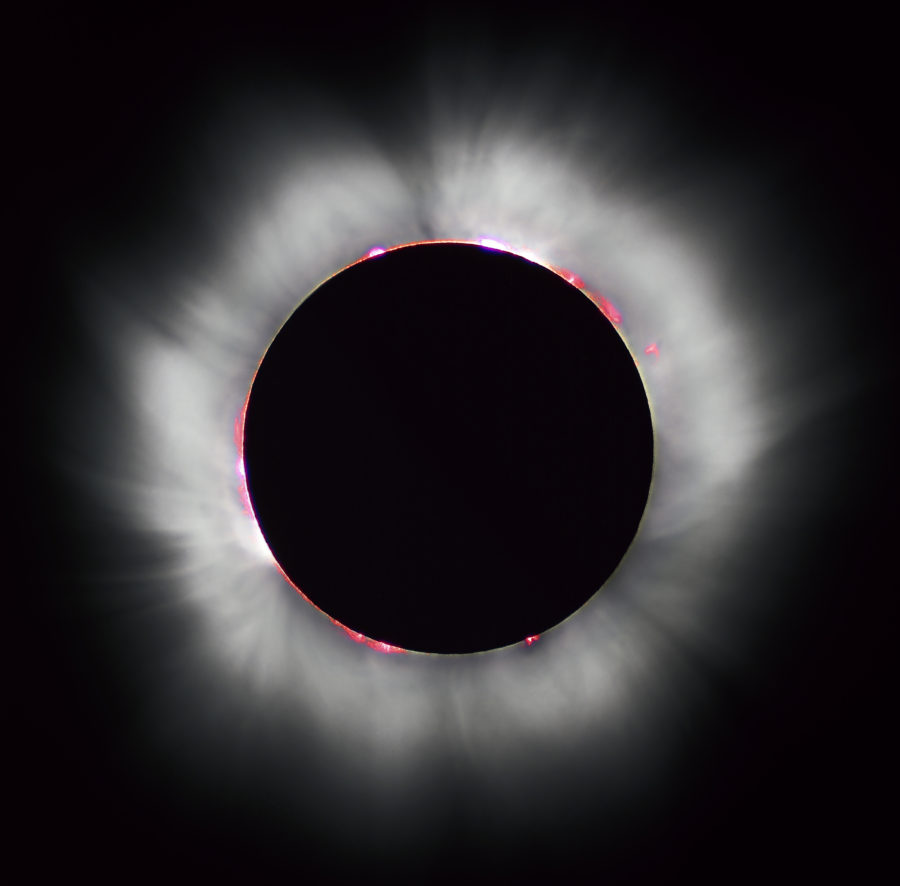By now, you have probably heard something about the “Great American Eclipse“ which is going to take place on Monday, August 21st. You may have seen some things on social media or even network or cable news, but the hype is just starting to ramp up.
 So what is it? Eclipses occur at periodic intervals, both solar and lunar, in fact, there are 6 basic types of eclipses (3 solar and 3 lunar) but a Total Solar Eclipse is a rare spectacle that is beautiful to see and different every time. The outer atmosphere of the Sun, the corona, is ONLY visible during a total solar eclipse! Some people say that witnessing totality is a life changing experience.
So what is it? Eclipses occur at periodic intervals, both solar and lunar, in fact, there are 6 basic types of eclipses (3 solar and 3 lunar) but a Total Solar Eclipse is a rare spectacle that is beautiful to see and different every time. The outer atmosphere of the Sun, the corona, is ONLY visible during a total solar eclipse! Some people say that witnessing totality is a life changing experience.
OK, it’s what makes it so great? Why is this the “Great American Eclipse”? There are several reasons.
First, this is the first Total Solar Eclipse to traverse the Continental United States since 1918. Yup, it’s been 99 years since Americans have been treated to this amazing spectacle!
Another major factor is that so many people, 12.2 million, in fact, live beneath the path of totality (where the sun will be completely covered by the moon for up to 2 minutes and 40 seconds.) The moon’s shadow when it contacts land is about 70 miles wide and will travel on a path from Oregon to South Carolina. Parts of many cities will be beneath the shadow. There will be a viewing event in Saint Joseph, Missouri, and the predictions are that more than 100,000 will be at the site, making it the largest single viewing of a natural event ever!
completely covered by the moon for up to 2 minutes and 40 seconds.) The moon’s shadow when it contacts land is about 70 miles wide and will travel on a path from Oregon to South Carolina. Parts of many cities will be beneath the shadow. There will be a viewing event in Saint Joseph, Missouri, and the predictions are that more than 100,000 will be at the site, making it the largest single viewing of a natural event ever!
87.9 million Americans live within 200 miles of the path of totality, that’s about 27% of the population! Without traffic, many could drive to the centerline in less than 4 hours.
There are more than 222 million Americans that live within 500 miles of the path, that’s more than 53% of the nation.
So besides the fact that so many people live within a days drive of the path of totality, the media is promoting their programming which will cover the eclipse. The Science Channel will begin live broadcasts at noon eastern time as will ABC. Other networks will soon begin promoting their eclipse coverage as well. Let’s not forget the Internet! There will be lots of sites to see the eclipse if you can’t make the trip. Many people will be broadcasting live on Facebook and other social media sites. Predictions are that in many areas, particularly in the more remote locations along the path, will experience failing cell networks because of all the cell phone users posting pictures and videos. In fact, NASA has predicted that this will be the most watched natural event in human history!
So should you try to get to the path of totality? Probably! But make sure you’ll have a place to stay. Many hotels and even campgrounds have been sold out for months. Mathematicians have done calculations that predict there could be major traffic jams, especially for last minute travelers. So, if you can get there, you’ll need to bring supplies (food, water, toilet paper) because many remote areas won’t be able to handle the influx of visitors. If cell service is affected your navigation apps won’t work. Bring a map, just in case!
THIS IS EXTREMELY IMPORTANT! NEVER LOOK DIRECTLY AT THE SUN WITHOUT APPROVED SOLAR FILTERS! Many stores are selling eclipse glasses, these are safe to use. But please, look at the ground when you put them on and take them off! NEVER LOOK THROUGH A TELESCOPE OR BINOCULARS AT THE SUN, IT CAN CAUSE INSTANT, PERMANENT DAMAGE TO YOUR EYES!! Only look through equipment that has an approved solar filter on the end pointing towards the sun. In New Jersey we will NOT have a Total Eclipse, the eclipse will be partial with about 77% of the sun being covered by the moon. Peak partiality occurs about 2:44pm. Many local amateur astronomers and Astronomy Clubs will be holding public viewing events. Locally, Amateur Astronomers, Inc, will be holding a viewing party at Trailside Museum in Mountainside. Check your local libraries, as many are holding eclipse parties and will be providing eclipse glasses.
 What if you don’t have a way to safely look at the sun to see what’s going on? Chances are, you do, and just don’t know it. A plastic kitchen colander will make a great pinhole projector, that will project dozens of crescents on the ground. Sunlight passing through leaves or bushes (like the picture on the left) will also make projected crescents that you’ll be able to see. Try to project onto a smooth, light colored surface to get the best contrast. You could also make a quick pinhole projector to observe the partial phases of the eclipse.
What if you don’t have a way to safely look at the sun to see what’s going on? Chances are, you do, and just don’t know it. A plastic kitchen colander will make a great pinhole projector, that will project dozens of crescents on the ground. Sunlight passing through leaves or bushes (like the picture on the left) will also make projected crescents that you’ll be able to see. Try to project onto a smooth, light colored surface to get the best contrast. You could also make a quick pinhole projector to observe the partial phases of the eclipse.
An easy pinhole projector can be made from 2 paper plates. Cut a 2″ square out of the center of one plate and tape a 3″ square sheet of aluminum foil over the smaller hole. Now, take a pin, and put a small hole in the center of the foil. You might want to put a magazine underneath the foil so you don’t rip it. Now take the plates outside, hold the one with the foil at arm’s length so it’s tilted towards the sun, hold the other plate about 3 feet behind the first plate and you’ll see a nice projected image of the sun.
Here’s a link to an app where you put in your zip code and it will show you how it will look at your location. It’s pretty fun to put in different zip codes and see the results.
We wish you clear skies and we hope that you can get to see this glorious natural phenomenon!
For more information visit:
www.greatamericaneclipse.com
eclipse2017.nasa.gov
www.skyandtelescope.com
Or just put August 21, 2017 Eclipse into your search engine!
Images are courtesy of Wikipedia.org, except for the projected crescents image, which is courtesy of Wayne Zuhl.


